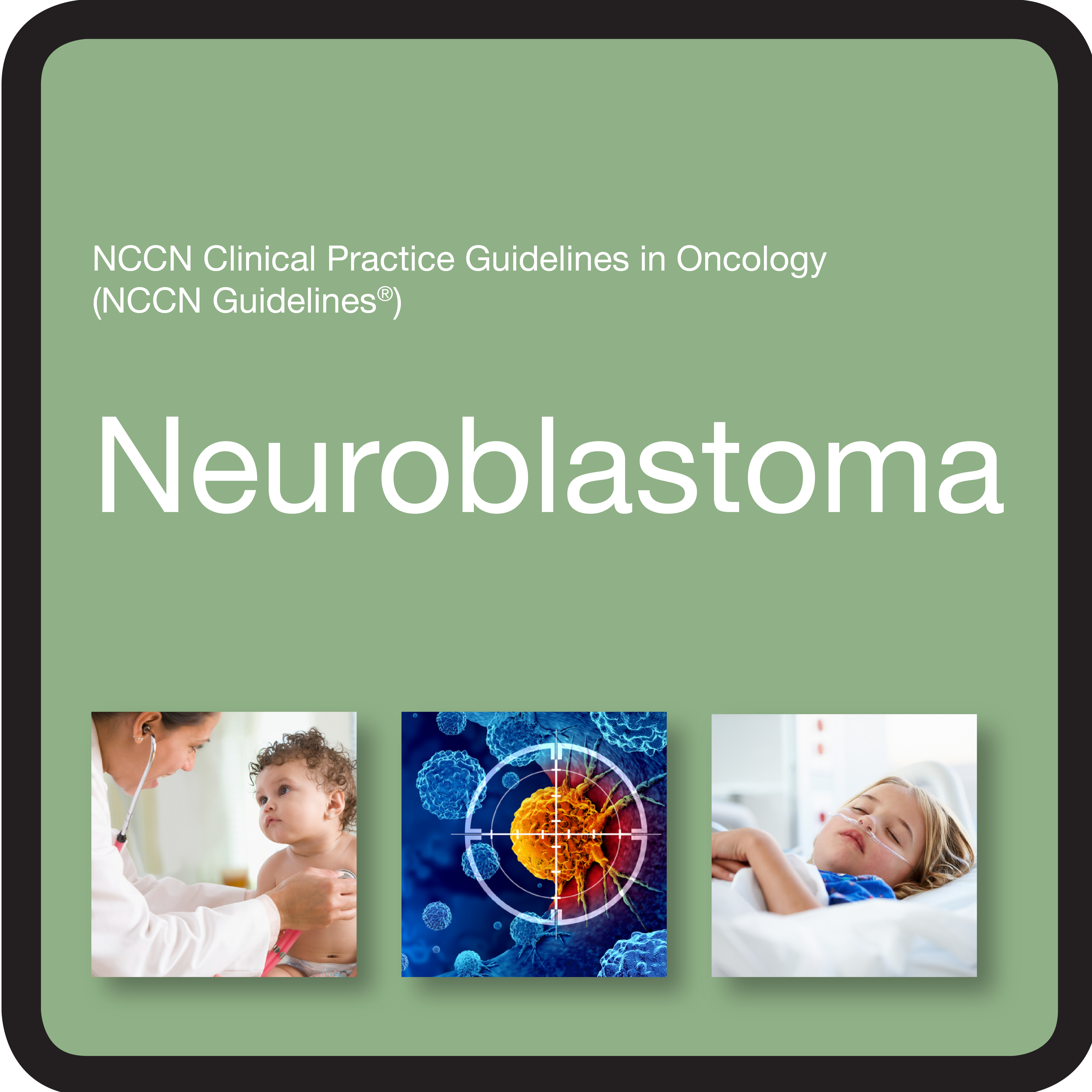News Details
New Resource for Selecting Best Treatment Path for Young Children with Cancerous Tumors Published by NCCN
New NCCN Guidelines for Neuroblastoma address the importance and impact of risk stratification for treating one of the more common types of pediatric solid tumors; includes vanguard treatment recommendations involving multimodality treatment for high-risk disease.
PLYMOUTH MEETING, PA [February 7, 2024] — The National Comprehensive Cancer Network® (NCCN®)—an alliance of leading cancer centers—today published its first ever set of treatment recommendations pertaining to neuroblastoma. Neuroblastoma is a type of solid tumor cancer that typically occurs in early childhood, with the majority diagnosed before age five.1 Neuroblastoma is the most common type of solid tumor (outside of brain tumors) in children, with more than 700 cases diagnosed in the United States every year.2 Research innovations have led to survival rates that are better than 90% for patients with low- and intermediate-risk neuroblastoma and around 50% for those with high-risk disease.3 Improving outcomes for patients with high-risk neuroblastoma and reducing long-term treatment effects for all patients remain areas of active research.
 “Neuroblastoma is a biologically and clinically heterogeneous cancer, which creates many challenges for those treating patients with this disease,” said Rochelle Bagatell, MD, Professor of Pediatrics and Solid Tumor Section Chief at Children's Hospital of Philadelphia, and Chair of the NCCN Clinical Practice Guidelines in Oncology (NCCN Guidelines®) Panel for Neuroblastoma. “The NCCN Guidelines were designed to assist clinicians caring for children with neuroblastoma by providing key information regarding risk stratification and by summarizing the data that have led to the current approaches to therapy. As new clinical trial results become available and as therapies evolve, we will continue to support providers by updating the guidelines over time.”
“Neuroblastoma is a biologically and clinically heterogeneous cancer, which creates many challenges for those treating patients with this disease,” said Rochelle Bagatell, MD, Professor of Pediatrics and Solid Tumor Section Chief at Children's Hospital of Philadelphia, and Chair of the NCCN Clinical Practice Guidelines in Oncology (NCCN Guidelines®) Panel for Neuroblastoma. “The NCCN Guidelines were designed to assist clinicians caring for children with neuroblastoma by providing key information regarding risk stratification and by summarizing the data that have led to the current approaches to therapy. As new clinical trial results become available and as therapies evolve, we will continue to support providers by updating the guidelines over time.”
Dr. Bagatell will be presenting an on-demand online session on the latest updates for neuroblastoma in the new NCCN Guidelines as part of the NCCN 2024 Annual Conference on April 5 – 7. Visit NCCN.org/conference to learn more and register.
“These new NCCN Guidelines for Neuroblastoma are the perfect platform for sharing how to think about this complicated disease and determine which categories of treatment should be considered for each individual patient,” explained Julie R. Park, MD, Chair, Department of Oncology, St. Jude Children's Research Hospital, Vice-Chair, NCCN Guidelines Panel for Neuroblastoma. “The guidelines break down how to incorporate the multi-disciplinary care that is needed, such as surgery or radiation, plus specific options for chemotherapy regimens.”
There are now 87 different NCCN Clinical Practice Guidelines in Oncology (NCCN Guidelines®), covering nearly every type of cancer, plus screening, prevention, and supportive care. The NCCN Guidelines® for Neuroblastoma are the 6th to focus specifically on treating pediatric cancer.
The NCCN Guidelines have a long history of providing treatment guidance that correlates with improved outcomes across numerous cancer types. The recommendations are determined by a multidisciplinary panel of experts from NCCN’s Member Institutions using the best available evidence and are updated at least once every year. By utilizing specialists with diverse areas of expertise and geographic locations, the panels are able to make sure the recommendations are thorough, representative, and understandable—particularly for clinicians who may not see patients with neuroblastoma very often. The NCCN Guidelines are intended as a resource for care providers and coverage determinations throughout the U.S. and around the world.
“We are particularly concerned with figuring out how to minimize treatment where possible,” said Dr. Park. “We wanted to make it easy for providers to quickly recognize which patients can have positive outcomes while experiencing less toxicity. That means including a lot of information on diagnosis and delving into analysis for molecular drivers and aspects of immunotherapy.”
Some of the common late effects from neuroblastoma treatment can include fertility issues, growth impairment, hearing trouble, and organ dysfunction.4 NCCN also publishes NCCN Guidelines for Adolescent and Young Adult Oncology, which provide treatment advice geared toward younger populations across all cancer types. There are separate NCCN Guidelines for Survivorship that include additional information on mitigating the long-term impact of treatment.
All NCCN Guidelines are available with a free account at NCCN.org or via the Virtual Library of NCCN Guidelines® App.
# # #
About the National Comprehensive Cancer Network
The National Comprehensive Cancer Network® (NCCN®) is a not-for-profit alliance of leading cancer centers devoted to patient care, research, and education. NCCN is dedicated to improving and facilitating quality, effective, equitable, and accessible cancer care so all patients can live better lives. The NCCN Clinical Practice Guidelines in Oncology (NCCN Guidelines®) provide transparent, evidence-based, expert consensus recommendations for cancer treatment, prevention, and supportive services; they are the recognized standard for clinical direction and policy in cancer management and the most thorough and frequently-updated clinical practice guidelines available in any area of medicine. The NCCN Guidelines for Patients® provide expert cancer treatment information to inform and empower patients and caregivers, through support from the NCCN Foundation®. NCCN also advances continuing education, global initiatives, policy, and research collaboration and publication in oncology. Visit NCCN.org for more information.
[1] Neuroblastoma Treatment (PDQ®): Health Professional Version. 2023 Aug 22. In: PDQ Cancer Information Summaries [Internet]. Bethesda (MD): National Cancer Institute (US); 2002. 2023. Available at: https://www.ncbi.nlm.nih.gov/books/NBK65747/
[2] About Neuroblastoma. Available at: https://www.cancer.org/content/dam/CRC/PDF/Public/8758.00.pdf.
[3] Neuroblastoma Early Detection, Diagnosis, and Staging. 2021. Available at: https://www.cancer.org/content/dam/CRC/PDF/Public/8760.00.pdf
[4] Friedman DN, Henderson TO. Late Effects and Survivorship Issues in Patients with Neuroblastoma. Children (Basel) 2018;5.
